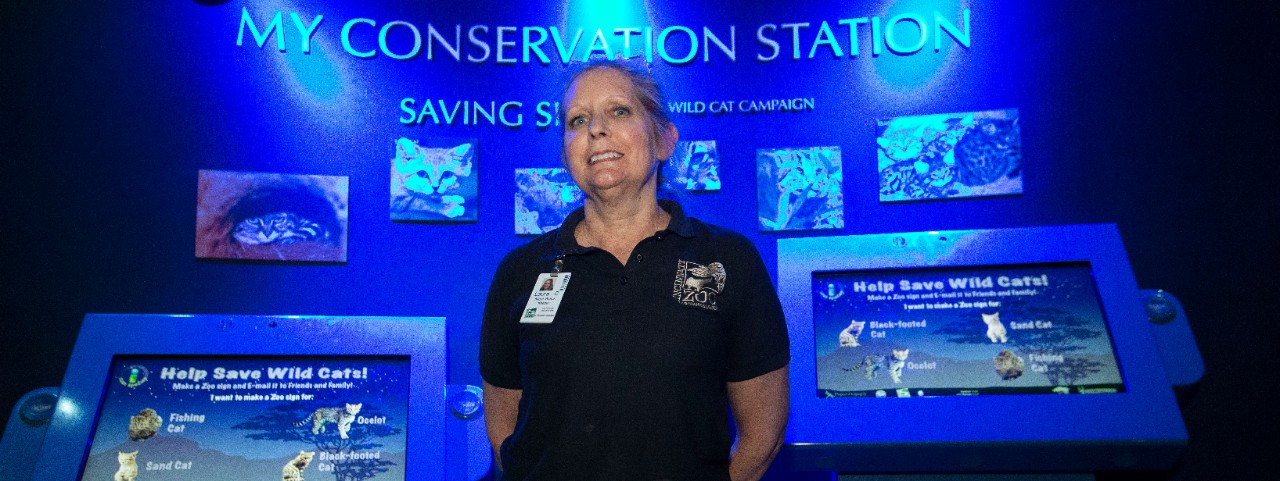
UC grad helping Asia's wild cats
A conservation grant from the Cincinnati Zoo & Botanical Garden will aid in tracking the secretive fishing cat
Lions and tigers get a lot of attention from visitors at the Cincinnati Zoo & Botanical Garden.
But zookeeper and University of Cincinnati alumna Laura Carpenter said the diminutive fishing cat surprises her every day with its outsize personality and intelligence.
Carpenter, a UC biology graduate, secured a $4,000 conservation grant from the zoo to purchase satellite tracking collars so researchers in Sri Lanka can identify the most important habitat for these adaptive little predators.
“I wanted to do something for small cats because they don’t get a lot of publicity compared to the big cats,” Carpenter said. “Most people don’t even know what a fishing cat is.”
The project demonstrates the profound impact of UC's alumni around the world as described in its strategic direction, Next Lives Here.
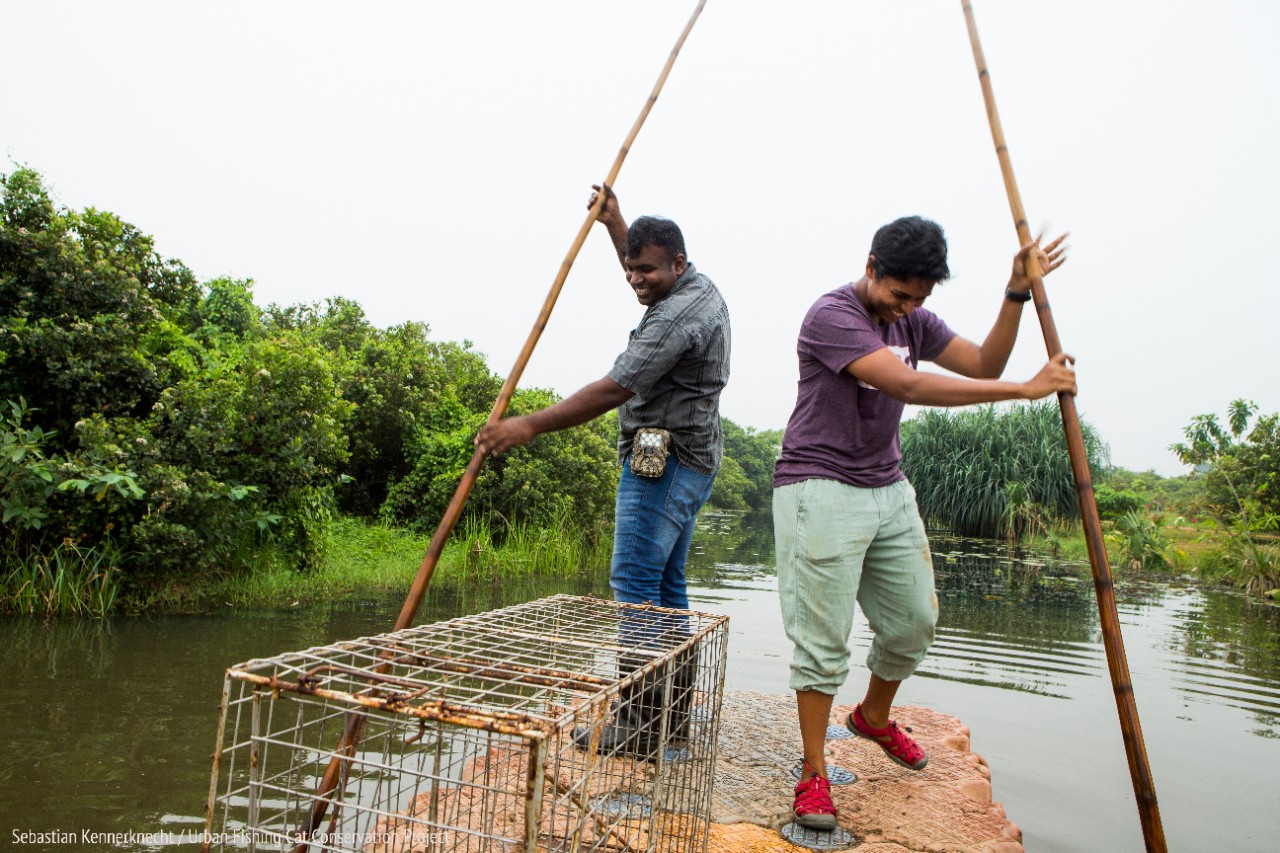
Researchers pole down a river with a live trap to capture fishing cats for study in Sri Lanka. Photo/Sebastian Kennerknecht
They are incredibly good at hiding from people.
Anya Rantayaka, Global Wildlife Conservation
Carpenter is a fan. Gray-brown with spots, Asia’s fishing cat is a little bigger than a pet tabby. True to its name, the fishing cat catches fish. It even has webbed feet, which is unusual among cats and makes it a good swimmer.
“Fish is a major part of their diet in the wild,” she said. “They’re not a very friendly cat. They’re very charismatic though. And they’re very smart. Our visitors like to watch them.”
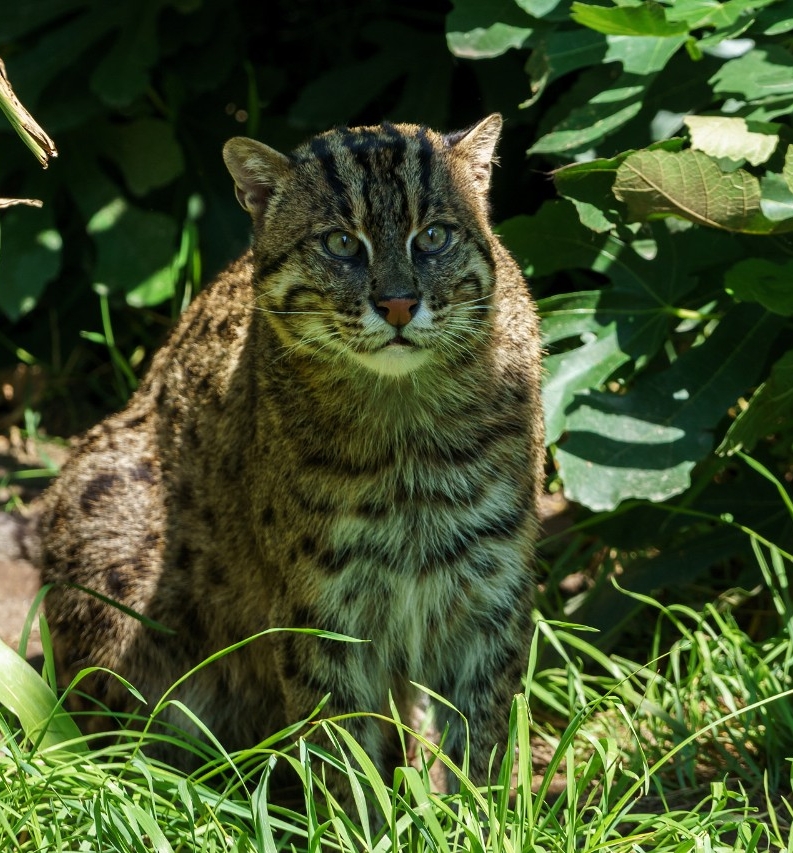
A fishing cat on display at a European zoo. Photo/Matthias/Wikimedia Commons
The Cincinnati Zoo has one fishing cat, an older female. Behind the scenes at the zoo’s Night Hunters habitat, keepers can pump live fish into her artificial pond. The fishing cat swipes at the water to snag a fish with her piercing claws.
“She will put her whole head underwater to catch a fish. She taught her kittens how to fish in the pond. They love the water,” Carpenter said.
The felines are in decline across most of their range across India, Thailand and six other countries, according to the International Union for the Conservation of Nature. The group placed fishing cats on its “red list” of vulnerable or threatened species.
In Sri Lanka’s capital, Colombo, the little predators are proving to be resilient and adaptable living alongside 5.6 million people. The wild cats evolved to survive in wetlands. But in the city, they have become adept at keeping a low profile, said Anya Ratnayaka, a researcher with Global Wildlife Conservation.
Fishing cats traverse the city’s high walls, low culverts and underground drains during their nightly hunting patrols, she said.
“They are also incredibly good at hiding from people,” she said.
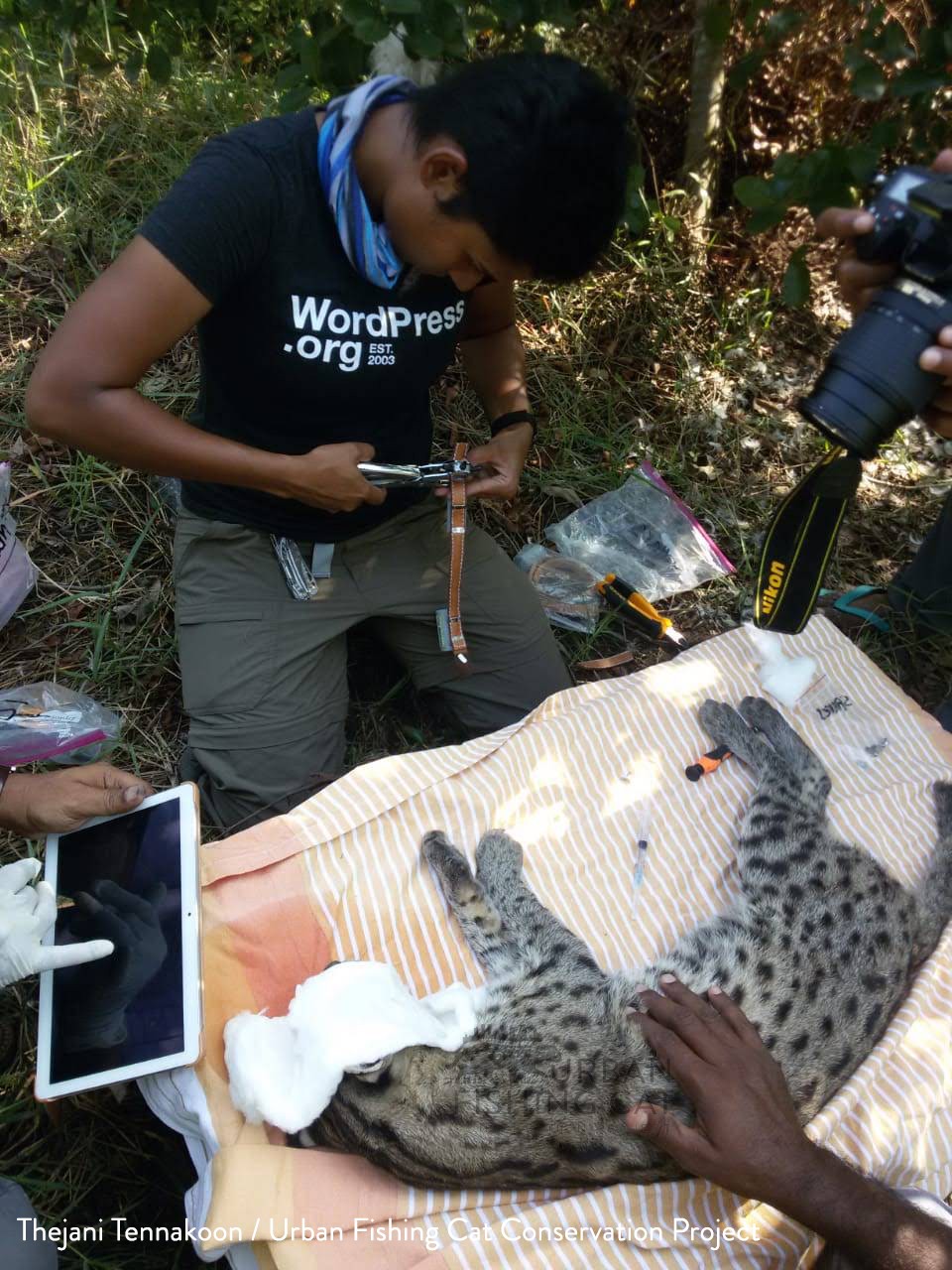
Researchers examine a sedated fishing cat in Sri Lanka. Photo/Thejani Tennakoon
But city living has its dangers. One of the cats was recently struck and killed crossing a busy road. The loss of one of the rare cats made local news headlines in Sri Lanka.
Carpenter said by knowing more about where the little cats go, conservation groups can make their preferred wildlife corridors safer to travel. The GPS collars have an accelerometer to track how quickly fishing cats navigate their habits, both rural and urban.
And the data will give researchers clues about where the cats hunt or rest, what routes they take and how they find their way around a complex and busy urban landscape.
“We can then do some ‘ground truthing’ in these locations and get an understanding as to why a cat used one particular route and not another. Maybe it has better vegetation cover or a nice drain to use,” Ratnayaka said.
Education is a crucial part of the Cincinnati Zoo’s conservation mission, Carpenter said. The fishing cat’s Night Hunters home features large informational displays on small cat conservation. Likewise, researchers in Sri Lanka are educating residents about the urban wild cats with whom they share their neighborhoods. Fishing cats sometimes help themselves to koi ponds or create other nuisances for local residents.
“I think urban ecologists have a tough road ahead of them when it comes to conservation of species,” Ratnayaka said. “But raising awareness will definitely help. Once you make a person fall in love with an animal, it will be just a little easier to convince them to make small changes to help protect them, too.”

The walkway outside Nocturnal Hunters is imprinted with the tracks of felines at the Cincinnati Zoo & Botanical Garden. Photo/Joseph Fuqua II/UC Creative Services
Ratnayaka said she is optimistic about the future of fishing cats in Sri Lanka.
“We have a fantastic team of dedicated conservationists working throughout the species’ global range. All of them are working hard with local communities to spread awareness and help them deal with conflict,” Ratnayaka said.
The Cincinnati Zoo also is helping to save endangered species around the world. And the zoo collaborates with other institutions to find compatible mates to expand the captive population as part of the animal’s species survival plan.
Previously, Carpenter secured grant funding to purchase camera traps for research in Ecuador on other small cats such as ocelots and margays.
Carpenter studied biology in UC’s McMicken College of Arts and Sciences. She was offered a staff position at the zoo after a successful internship.
“The opportunities here are what you make of them,” Carpenter said.
So what’s her favorite cat at the zoo? (It can’t be a Bearcat since technically that’s actually a type of civet.)
“My favorite is the clouded leopard. They’re always chuffing and wanting you to pet them. I started working on their species survival plan in 2004 and they stole my heart,” she said.
Featured image at top: UC alumna Laura Carpenter stands in front of an education display about small cat conservation at the Cincinnati Zoo & Botanical Garden. Photo/Joseph Fuqua II/UC Creative Services.
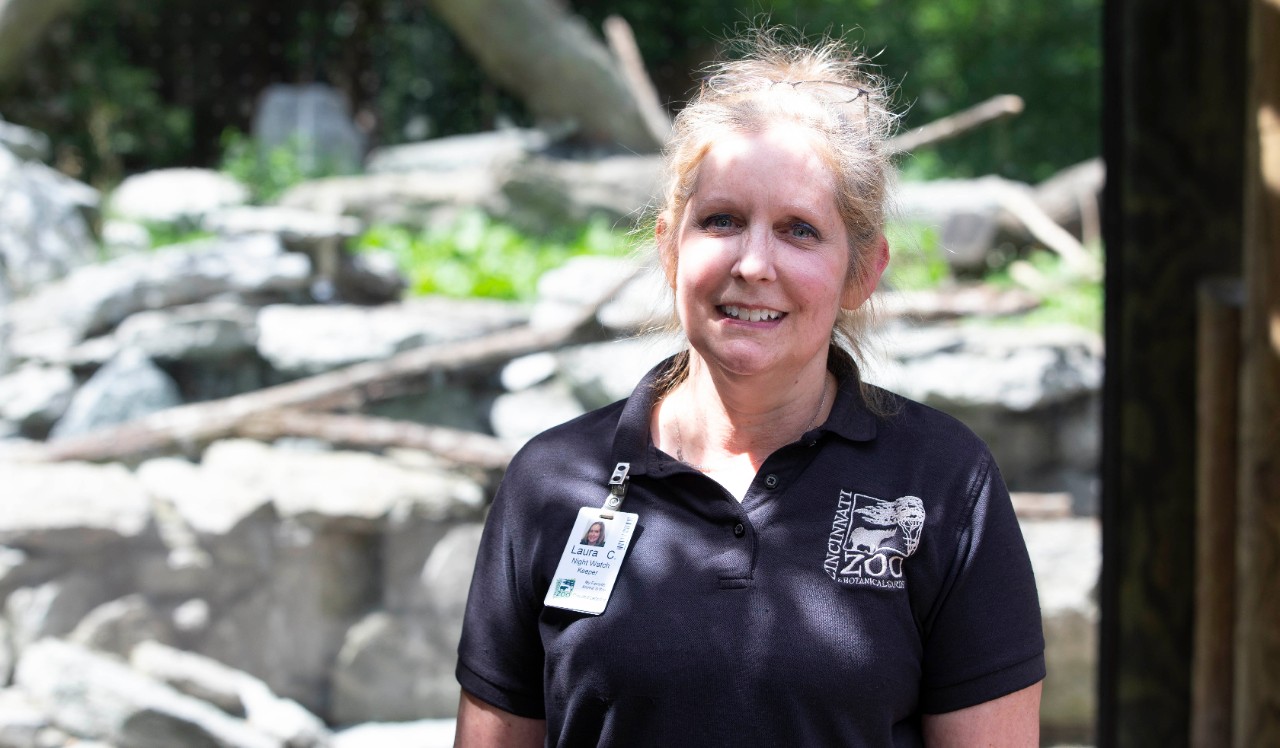
UC biology graduate Laura Carpenter, a keeper at the Cincinnati Zoo & Botanical Garden, received a conservation grant to help researchers track wild fishing cats. Photo/Joseph Fuqua II/UC Creative Services
Next Lives Here
Discover UC's commitment to Next Lives Here, the strategic direction with designs on leading urban public universities into a new era of innovation and impact.
Become a Bearcat
Do you like the idea of conducting your own biology research? Apply online or get more information about undergraduate enrollment by calling 513-556-1100. Learn more about UC's many undergraduate and graduate programs.
Related Stories
Seven common startup challenges and how to solve them
April 3, 2025
Launching a new business isn’t an easy endeavor, but it’ll be simpler for entrepreneurs who consider common startup challenges and plan out ways to solve them.
Hands-on experiences, real-world impact
April 3, 2025
University of Cincinnati second-year medical sciences student Jay Patel is pursuing his passions as founder of the Dahyabhai Foundation, a cancer researcher and a Portman Fellow.
IMPACT Innovation at IDD Education Center celebrates milestone
April 3, 2025
The IDD Education Center’s IMPACT Innovation program celebrates a major milestone as associate Haley secures a position at Adrian Durban Florist. Through hands-on training, mentorship, and community partnerships, IMPACT Innovation helps adults with autism develop independence, communication, and workplace skills. Haley’s mother shares how the program has supported her daughter's growth, while program director Genna Kieper highlights the role of job coaching in Haley’s success. Adrian Durban Florist, a long-time partner, continues to be a champion. The IDD Education Center remains committed to expanding employment opportunities for individuals with disabilities.
